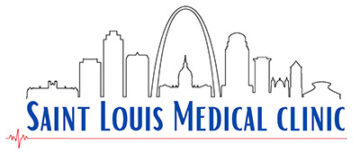Platelet-Rich Plasma for Tendon Injuries
Specialized Treatment for Tendon Injuries in St. Louis
What is Platelet-Rich Plasma or PRP?
One of the most exciting developments in the treatment of tendon injuries is Platelet-Rich Plasma (PRP), a process that taps a patient’s own healing factors and concentrates them to cause a healing effect. PRP is recognized as a safe and effective medical procedure that can generate healing in a chronically injured tendon.
What Causes Tendon Pain?
To understand how PRP works, it is useful to understand what causes chronic tendon pain. “Tendinitis” means “tendon inflammation,” a much less common condition than “tendinosis”, which is degeneration of the tendon structure. Most chronic tendon injuries are caused by failure of the collagen that makes up the tendon’s substance, which leads to degeneration.
Body movement is caused by muscle contraction. Near a muscle’s attachment to bone, its structure changes to a whitish, tough substance known as a tendon. The tendon typically crosses over a joint and inserts onto a bony attachment, so that when the muscle contracts, the tendon pulls on the bone, causing the joint to move. Tendons endure a lot of repetitive forces, and over time, they may break down and become painful.
Under a microscope, tendons look like dry spaghetti in a box. The tendon strands are lined up in parallel, so that when a muscle exerts its force on a tendon, the tendon pulls on its attachment site. In tendinosis, the injured collagen looks like a plate of spaghetti, with strands going in all directions, and the involved tendon generates pain when the muscle tries to do its work. It can also weaken and, occasionally, rupture.
Microscopic studies of tissue removed during surgery for tendinopathy show little to no inflammation. This is why anti-inflammatory medications only help temporarily. Their pain-relieving effects may make the tendon feel better, but the anti-inflammatory effects do nothing to treat the cause of the pain or heal the tendon.
Why Choose PRP?
One of the most common procedures used by physicians to treat tennis elbow is a steroid injection. In this procedure, an anti-inflammatory-type steroid is injected into the injured area of the tendon. Because this type of steroid can relieve pain, this often causes the tendon to feel better for a while. However, several recent studies have shown less long-term pain relief for patients who have undergone steroid injection than for patients who had injections of a local anesthetic alone. Interestingly, both procedures help in the short-term, and the procedure that used a local anesthetic alone actually worked better in the long run.
Why is this the case? Research shows that disrupting the abnormal tissue with a needle can start a healing response in tendons, regardless of what is injected. In fact, there are studies showing improvement in patients with pain related to tennis elbow after injections with several different medications as well as dry needling. But multiple studies of many different tendons show that steroids injected into tendons actually cause weakening of the tendon and can lead to rupture. Used with discretion, steroid shots are felt to be safe, but a steroid injection will not cause a tendon to heal.
On the other hand, PRP is a simple and safe way to treat damaged tendons by stimulating tendon regeneration. This procedure harnesses your own body’s healing potential to stimulate the therapeutic process. Platelets have growth factors that initiate and stimulate a healing response. Biologically, this makes sense: the primary function of platelets is to make the blood clot when there is trauma, and after trauma, there is a need to heal. There are now multiple studies showing long-term effectiveness of PRP in the treatment of tendinopathy.
What to Expect During PRP Treatment
The procedure is simple, done in the office, and causes little discomfort. The patient’s own blood is drawn and processed to separate the platelets. The blood is then spun in a centrifuge to produce a small volume of fluid with a high concentration of platelets, which is what is known as “Platelet Rich Plasma.” Ultrasound guidance is used to directly visualize the area of damaged tendon in order to accurately deliver the PRP to the most appropriate location within the tendon.
Processing the blood requires only 30 minutes. There may be soreness in the treated area(s) after the injection. It is important to avoid non-steroidal anti-inflammatory mediations after PRP treatment, as this may interfere with the activity of the platelets. Speak with your treating physician about his or her philosophy on this prior to treatment. Specific exercises are important to help the tendon with the healing process.
PRP for Tendon Injuries at St. Louis Medical Clinic
Dr. Wadsworth has used PRP injections to successfully treat a variety of tendon injuries and other conditions. Call 314-983-4049 to schedule a consultation.
©L. Tyler Wadsworth, MD, FACSM St. Louis Medical Clinic 3009 North Ballas Rd, 100B St. Louis, MO 63131

